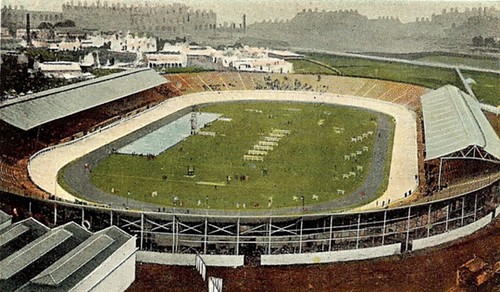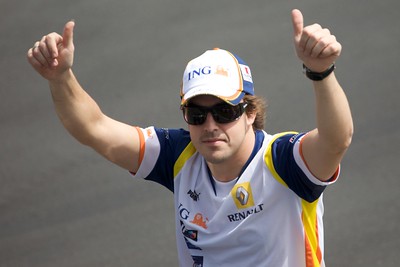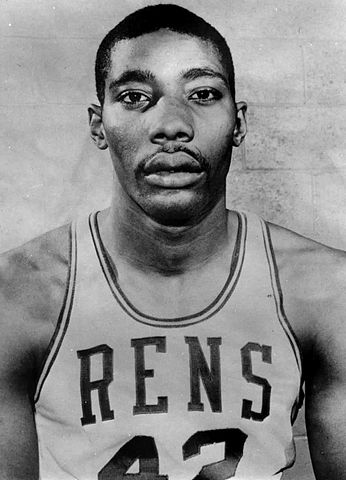Първият модерен стадион
Англичаните построиха съоръжение, готово да приеме почти всички спортове от Игрите към четвъртата Олимпиада
Стадионите съществуват още от древността. В Древна Гърция и в Древен Рим има построени съоръжения още преди новата ера. В единият случай, за да има къде да се провеждат Олимпийските игри, а в другия, за да се даде възможност на повече хора да се забавляват. След края на Римската империя идва и огромно затишие до появата на нови и по-модерни арени, каквито възникват около появата на нови организирани спортове в началото на 19-и век. Те обаче са строени така, че да отговарят на изискванията само на един спорт, например футбол, бейзбол или крикет.
С подновяването на Олимпийските игри през 1896-а година се възражда идеята за модерен стадион, на който да могат да се провеждат все повече надпревари. Първият е само обновен, вторият е пригоден за провеждането на подобно събитие, а след това са използвани два, които да отговарят на изискванията. Така се стига и до построяването на първи стадион, направен изцяло за това събитие. Става дума за „Уайт Сити Стейдиъм“ в Лондон, където се провеждат Игрите на четвъртата Олимпиада през 1908-а година. През годините той е използван и за по-различни събития като спийдуей, шоу със скокове, надпревари със стокови автомобили, надбягвания с хрътки и концерти.
„Уайт Сити Стейдиъм“ е построен по дизайна на инженер Джей Джей Уебстър и е построен само за 10 месеца. Той разполага с капацитет от 68 хиляди места и е открит от крал Едуард Седми на 27-и април 1908-а. Първата копка е направена на 2-и август 1907-а от Лейди Десбъро. Построяването му струва 60 хиляди паунда по онова време.
Стадионът разполага с писта, широка 7.3 метра и дълга 536 метра, а около него има трасе за колоездене, широко 11 метра и дълго 600. Вътрешността му включва басейн за плуване с олимпийски размери, както и басейн за скокове във вода.
За разлика от днешно време, изключително много събития от Олимпийските игри се провеждат само на този стадион. Сега има най-различни арени, включително плувните басейни и пистите за колоездене. Англичаните успяват да обединят всичко. На него завършва и първият модерен маратон в историята. Тогава е определена и дистанцията му от 42 километра и 195 метра – разстоянието от замъка Уиндзор до точката от стадиона точно пред местата за кралското семейство.
Лекоатлетическата писта се употребява до 1914-а година, а през 1922-а има опити стадионът да бъде продаден, но това така и не се случва и атлетите, които се готвят за участие на Игрите през 1924-а могат да го използват до последно.
През 1926-а обаче асоциацията по надбягвания с хрътки купува стадиона и той започва да се използва предимно за такива надпревари, но и за спийдуей състезания. Считан за мястото с най-добра писта за надбягвания с хрътки „Уайт Сити Стейдиъм“ си има много почитатели из цяла Великобритания. Точно преди Втората световна война е регистрирана и рекордната му посещаемост от 92 хиляди зрители на финала на най-престижното състезание при хрътките през 1939-а година.
През 1931-а е направена нова лекоатлетическа писта, на която се провеждат състезания, организирани от аматьорската атлетическа асоциация чак до 1970-а. Освен тях на стадиона има редица важни атлетически надпревари, някои международни футболни мачове, включително срещата на световните финали през 1966-а между Уругвай и Франция.
Също през 1931-а година Куйнс Парк Рейнджърс започва един от двата си престоя на стадиона, който продължава до 1933-а. Вторяит е от 1962 до 1963, след което клубът решава да си остане на „Лофтъс Роуд“.
В годините от 1932-а до 1958-а се провеждат и множество боксови вечери, които се доближават до рекордната посещаемост от 90 хиляди.
През 1933-а собствениците на стадиона дават надежда на ръгби отбора Уиган Хайфийлд да оцелее, тъй като той е пред фалит и няма място, на което да продължи да играе своите мачове. Отборът сменя името си на Лондон Хайфийлд и продължава да съществува, но много скоро собствениците на съоръжението разбират, че няма да им е особено изгодно да приемат подобни срещи.
Стадионът е разрушен през 1985-а и на неговото място са построени множество сгради, известни като „Уайт Сити Палас“, които съществуват и днес.




